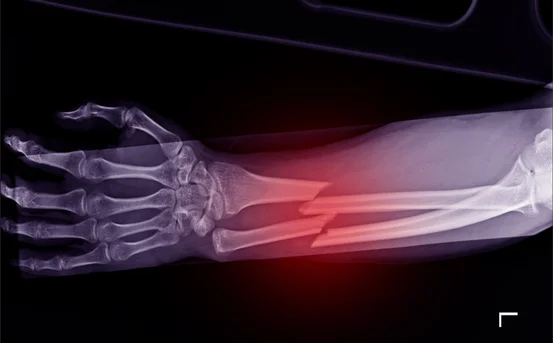Chikungunya is a mosquito-borne viral disease that has seen frequent outbreaks in tropical and subtropical regions, including India. Caused by the Chikungunya virus (CHIKV), the illness is primarily transmitted through the bite of infected Aedes aegypti and Aedes albopictus mosquitoes the same mosquitoes responsible for dengue and Zika virus transmission.
Though Chikungunya is rarely fatal, it can cause severe joint pain, high fever, rash, and fatigue that may persist for weeks or even months. Early and accurate diagnosis of Chikungunya is essential for proper management, symptom relief, and to rule out other illnesses with similar symptoms, such as dengue and malaria.
Understanding the Importance of Early Diagnosis
Chikungunya shares many clinical features with other mosquito borne diseases, especially dengue fever. Because of these overlapping symptoms, accurate lab testing is essential to confirm Chikungunya and avoid misdiagnosis. Moreover, timely diagnosis helps in planning supportive treatment, preventing complications, and controlling the spread of infection.
Common Symptoms That Lead to Testing
Most Chikungunya cases become symptomatic within 3–7 days after a mosquito bite. The early symptoms usually prompt individuals to seek medical help. Some of the most prominent symptoms include :-
-
Sudden onset of high-grade fever (often over 102°F)
-
Intense joint pain (especially in the hands, wrists, ankles, and knees)
-
Headache and muscle pain
-
Fatigue and weakness
-
Skin rash that may appear 2–5 days after the fever
-
Nausea or vomiting
-
Mild bleeding (such as from the nose or gums) in some cases
In infants, elderly patients, and individuals with pre-existing health conditions, complications can arise, which makes early diagnosis even more critical.
Who Should Get Tested for Chikungunya?
Anyone presenting with the symptoms mentioned above, especially in regions with known mosquito-borne infections, should consider getting tested. It is particularly important for :-
-
Travelers returning from endemic areas
-
Residents in outbreak-prone regions during the rainy season
-
Individuals who show symptoms but test negative for dengue or malaria
-
Patients experiencing persistent joint pain after fever subsides
Diagnosis of Chikungunya
- Clinical Diagnosis :- Initially, physicians may perform a clinical diagnosis based on presenting symptoms and a history of travel or residence in areas with known Chikungunya outbreaks. However, since symptoms overlap with diseases like dengue and Zika, confirmatory lab tests are essential.
-
Laboratory Testing for Chikungunya :- There are several laboratory tests used to confirm Chikungunya virus infection. The choice of test depends on the duration of the illness at the time of testing.
- RT-PCR (Reverse Transcriptase Polymerase Chain Reaction) Test :- This test detects the genetic material (RNA) of the Chikungunya virus and is most effective when conducted within the first 7 days of symptom onset. It is highly sensitive and provides a definitive diagnosis.
- Chikungunya IgM Antibody Test :- This blood test detects IgM antibodies, which usually begin to appear 4–5 days after the onset of symptoms and can remain in the blood for several weeks. It is ideal for patients who are tested after the initial fever phase.
- ELISA (Enzyme-Linked Immunosorbent Assay) :- ELISA is another method used to detect Chikungunya-specific IgM or IgG antibodies. It is commonly used in diagnostic labs and provides accurate serological results.
- Virus Isolation :- Although not commonly used due to its complexity, virus isolation is a method where the Chikungunya virus is grown in a laboratory from a blood sample. It is mostly used for research or advanced clinical studies.
- Rapid Diagnostic Tests (RDTs) :- In some cases, rapid tests are available for Chikungunya diagnosis. These tests provide quicker results, but they are generally considered less accurate than ELISA or PCR methods.
Differentiating Chikungunya from Dengue and Zika
Because Chikungunya often co-circulates with dengue and Zika, and shares common symptoms like fever, rash, and joint pain, differential diagnosis is crucial. While dengue often leads to severe platelet reduction and internal bleeding risks, Chikungunya is known for prolonged joint pain. Simultaneous testing for all three viruses is often recommended in outbreak-prone regions.
When Should You Get Tested?
The ideal time to get tested depends on your symptoms :-
-
Within the first 5 days of fever :- Opt for RT-PCR for the most accurate detection.
-
After 5–7 days of illness :- Choose serological tests like IgM or ELISA for antibody detection.
Early testing also helps reduce the chances of transmitting the virus to others via mosquito bites, thereby controlling the outbreak more effectively.
Managing Chikungunya After Diagnosis
Although there is no specific antiviral treatment for Chikungunya, diagnosis plays a crucial role in guiding supportive care. Common treatment includes :-
-
Rest and hydration
-
Use of paracetamol to reduce fever and joint pain
-
Avoiding NSAIDs like ibuprofen until dengue is ruled out
-
Physiotherapy in chronic joint pain cases
It’s also vital to follow mosquito control measures post-diagnosis to prevent further spread.
Where to Get Tested for Chikungunya?
In India, diagnostic labs across cities and towns offer Chikungunya testing services. Booking a test is now easier than ever thanks to online platforms like MediSuggest, which help you :-
-
Discover nearby certified diagnostic labs
-
Compare test prices and facilities
-
Book appointments instantly
-
Avail of free home sample collection in select locations
Conclusion
Chikungunya may not be life threatening, but it can lead to significant discomfort and prolonged joint issues. Timely diagnosis is key to effective management and quicker recovery. If you experience symptoms like sudden high fever, severe joint pain, or skin rashes especially in mosquito prone areas consult a doctor and get tested for Chikungunya.























